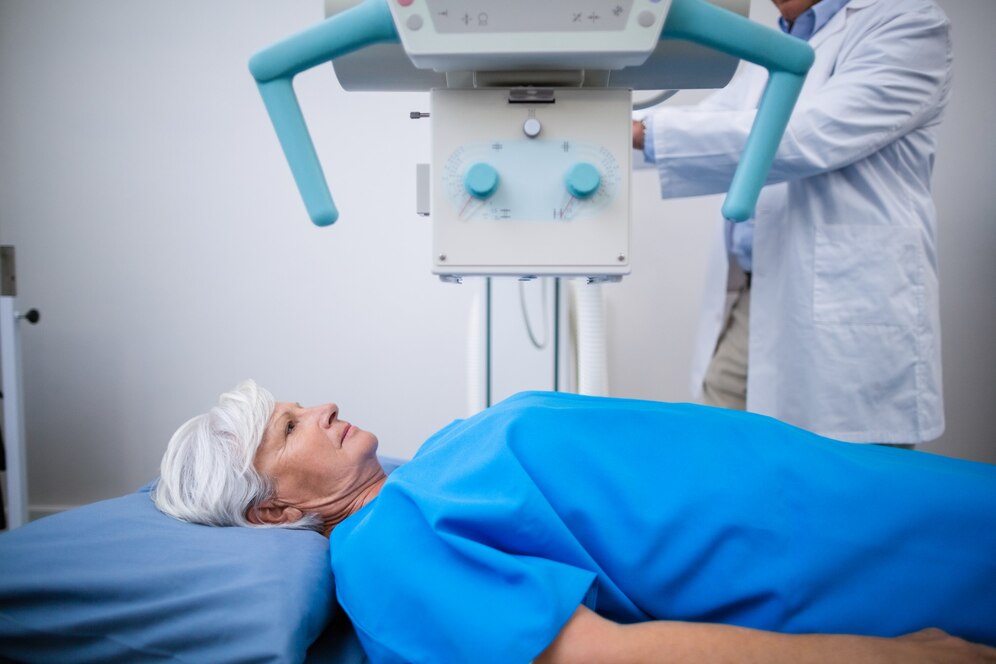Introduction
Bariatric surgery has emerged as a highly effective treatment for severe obesity and its associated comorbidities, offering significant weight loss and improvement in obesity-related conditions. As surgical techniques have evolved, integrating robotic systems has revolutionised the field, providing surgeons with enhanced precision, control, and visualisation. Robotic bariatric surgery represents a cutting-edge approach that combines the principles of minimally invasive surgery with advanced robotic technology, potentially leading to improved patient outcomes and expanded surgical capabilities.
The importance of robotic bariatric surgery lies in its potential to address some of the limitations of traditional laparoscopic approaches while maintaining the benefits of minimally invasive surgery. As obesity rates continue to rise globally, the demand for effective and safe bariatric procedures is increasing. Robotic systems offer the promise of standardising surgical techniques, reducing human error, and potentially expanding the range of patients who can benefit from bariatric surgery.
This article aims to provide a comprehensive overview of the latest advances in robotic bariatric surgery, exploring the evolution of robotic systems, enhanced surgical techniques, improved patient outcomes, challenges and limitations, and future directions in this rapidly evolving field. By examining these aspects, we can gain insight into how robotic technology shapes the future of bariatric surgery and its potential impact on patient care and surgical practice [1].
Evolution of Robotic Systems in Bariatric Surgery
The journey of robotic systems in bariatric surgery began with the introduction of the da Vinci Surgical System in the early 2000s. This pioneering platform, initially developed for cardiac surgery, was soon adapted for various surgical specialities, including bariatrics. The early robotic systems offered basic 3D visualisation and improved instrument dexterity but were limited by their size, cost, and complexity.
Current state-of-the-art robotic platforms have significantly evolved, addressing many of the limitations of their predecessors. The latest generation of the da Vinci system, for instance, features enhanced 3D high-definition visualisation, improved ergonomics, and more intuitive controls. These advancements allow surgeons to perform complex bariatric procedures with greater precision and comfort.
Key technological advancements in robotic bariatric surgery include:
1. Enhanced imaging systems: Modern robotic platforms incorporate advanced imaging technologies such as near-infrared fluorescence imaging, which can help surgeons identify critical structures and assess tissue perfusion in real time.
2. Improved instrument design: New robotic instruments offer a greater range of motion and improved agility, allowing for more precise dissection and suturing in confined spaces.
3. Advanced energy devices: Integration of ultrasonic and advanced bipolar energy devices into robotic platforms has improved tissue dissection and hemostasis capabilities.
4. Upgraded software and user interfaces: More intuitive control systems and improved software algorithms have enhanced surgeons’ ability to manipulate robotic arms and instruments efficiently.
These technological advancements have collectively contributed to making robotic bariatric surgery more accessible, efficient, and potentially safer for both patients and surgeons [2].
Enhanced Surgical Techniques and Procedures
Robotic technology has enabled the refinement of existing bariatric procedures and the development of novel surgical techniques. Two of the most common robotic bariatric procedures are the Roux-en-Y gastric bypass (RYGB) and sleeve gastrectomy.
Robotic Roux-en-Y gastric bypass has benefited significantly from robotic assistance. The enhanced agility and visualisation of robotic systems allow for more precise gastric pouch creation and anastomoses. Surgeons can perform fine suturing with greater ease, potentially leading to more secure connections and reduced risk of leaks. The robotic approach also facilitates better visualisation of Petersen’s space and mesenteric defects, allowing for more thorough closure and potentially reducing the risk of internal hernias.
Robotic sleeve gastrectomy has also seen improvements with the adoption of robotic technology. The enhanced control and stability of robotic instruments allow for more consistent staple line creation along the greater curvature of the stomach. This precision may contribute to a more uniform sleeve shape and potentially reduce the risk of staple line bleeding or leaks. The improved visualisation and manoeuvrability in the upper abdomen can facilitate a complete dissection of the fundus, which is critical for achieving optimal weight loss outcomes.
Novel robotic bariatric procedures are also emerging, taking advantage of the unique capabilities of robotic systems. For example, the robotic-assisted single-anastomosis duodenal-ileal bypass with sleeve gastrectomy (SADI-S) is gaining attention as a potential alternative to traditional biliopancreatic diversion procedures. This technique combines the benefits of sleeve gastrectomy with a single anastomosis, potentially offering improved metabolic outcomes while reducing surgical complexity.
Another innovative approach is the robotic-assisted placement of adjustable gastric bands. While the popularity of gastric banding has declined in recent years, the robotic approach offers improved visualisation and precision in band placement, which may lead to better outcomes and reduced complications for selected patients.
These enhanced surgical techniques and procedures demonstrate how robotic technology improves existing bariatric operations and paves the way for new and potentially more effective interventions in treating obesity [3].
Improved Patient Outcomes and Safety
One of the primary drivers behind the adoption of robotic bariatric surgery is the potential for improved patient outcomes and enhanced safety profiles. Several studies have suggested that robotic bariatric procedures offer advantages over traditional laparoscopic approaches in terms of reduced complications and faster recovery times.
Reduced complications and recovery time:
Robotic bariatric surgery has been associated with lower rates of certain postoperative complications, such as anastomotic leaks and wound infections. The precise suturing and tissue handling enabled by robotic systems may contribute to more secure anastomoses and reduced tissue trauma. Additionally, some studies have reported shorter hospital stays and quicker return to normal activities for patients undergoing robotic bariatric procedures than conventional laparoscopic approaches.
Enhanced precision and visualisation:
The advanced 3D visualisation and increased dexterity of robotic systems allow surgeons to perform more precise dissections and suturing. This enhanced precision may be particularly beneficial in complex cases or revisional surgeries, where adhesions and altered anatomy can pose significant challenges. The improved visualisation also enables better identification of critical structures, potentially reducing the risk of accidental injury to surrounding tissues.
Comparison with traditional laparoscopic approaches:
Challenges and Limitations of Robotic Bariatric Surgery
While the benefits of robotic bariatric surgery are promising, it is essential to note that the evidence is still evolving. Some studies have shown comparable outcomes between robotic and laparoscopic approaches, particularly in terms of weight loss and resolution of obesity-related comorbidities. However, proponents of robotic surgery argue that the enhanced ergonomics and reduced physical strain on surgeons may lead to more consistent outcomes, especially in high-volume centres.
It is worth nothing that the learning curve associated with robotic bariatric surgery can initially impact outcomes. As surgeons gain experience with robotic platforms, procedure times tend to decrease, and complication rates may improve. This underscores the importance of proper training and mentorship programs to ensure optimal patient outcomes as robotic technology becomes more widespread in bariatric surgery [4].
Despite the potential benefits of robotic bariatric surgery, several challenges and limitations must be addressed as the field continues to evolve.
Cost considerations:
One of the most significant barriers to the widespread adoption of robotic bariatric surgery is the high cost associated with robotic systems. The initial capital investment for acquiring a robotic platform, ongoing maintenance expenses, and the cost of disposable instruments can be substantial. These costs can strain hospital budgets and may be challenging to justify in some healthcare systems, particularly if the clinical outcomes are comparable to traditional laparoscopic approaches. However, proponents argue that the potential for reduced complications and shorter hospital stays may offset some of these costs in the long term.
Learning curve and training requirements:
The adoption of robotic technology in bariatric surgery necessitates specialised training for surgeons and operating room staff. The learning curve for mastering robotic techniques can be steep, requiring a significant time investment and potentially impacting initial patient outcomes. Developing comprehensive training programs and establishing mentorship opportunities are crucial for ensuring the safe and effective implementation of robotic bariatric surgery. Simulation-based training and proctoring systems have shown promise in accelerating the learning process and improving surgical proficiency.
Technical limitations and potential complications:
While robotic systems offer many advantages, they also have some technical limitations. The lack of haptic feedback in current robotic platforms can make it challenging for surgeons to gauge tissue tension and resistance, potentially leading to accidental tissue damage. Additionally, the bulky nature of robotic arms and the fixed position of robotic ports can sometimes limit access to some anatomical regions, particularly in patients with extreme obesity or complex abdominal anatomy.
Potential complications specific to robotic bariatric surgery include port-site hernias, robotic arm collisions, and rare instances of equipment malfunction. While these complications are generally infrequent, they highlight the need to refine robotic technologies and surgical techniques.
Addressing these challenges will be crucial for the continued advancement and widespread adoption of robotic bariatric surgery. As technology improves and more surgeons gain expertise in robotic techniques, some of these limitations may be mitigated, potentially leading to broader acceptance and implementation of robotic approaches in bariatric surgery [5].
Future Directions and Emerging Technologies
The field of robotic bariatric surgery is rapidly evolving, with several exciting developments on the horizon that promise to further enhance surgical capabilities and patient outcomes.
Artificial intelligence and machine learning integration:
The integration of artificial intelligence (AI) and machine learning algorithms into robotic surgical systems holds immense potential for bariatric surgery. These technologies could assist surgeons in real-time decision-making by analysing vast amounts of surgical data and providing insights on optimal technique, potential complications, and personalised patient management. AI-driven image analysis could enhance the identification of critical anatomical structures and assist in precise staple line placement. Additionally, machine learning algorithms could help predict patient outcomes and tailor surgical approaches based on individual patient characteristics.
Haptic feedback and sensory enhancements:
One of the current limitations of robotic surgery is the lack of tactile feedback. Future robotic systems are likely to incorporate advanced haptic technology, allowing surgeons to “feel” tissue resistance and tension. This enhancement could improve tissue handling, reduce the risk of inadvertent injury, and potentially shorten the learning curve for novice robotic surgeons. Moreover, the development of “smart” instruments with embedded sensors could provide real-time data on tissue properties, further augmenting the surgeon’s ability to make informed decisions during the procedure.
Miniaturisation and single-port systems:
The trend towards miniaturisation in robotic surgery is expected to continue, with the development of smaller, more flexible robotic instruments and systems. Single-port robotic platforms, which allow multiple instruments to be inserted through a single incision, are already being explored in bariatric surgery. These systems could potentially reduce invasiveness, improve cosmetic outcomes, and enhance postoperative recovery. As technology advances, we may see the emergence of micro-robots capable of performing bariatric procedures with even greater precision and less tissue disruption.
The future of robotic bariatric surgery may also involve the integration of augmented reality and virtual reality technologies, allowing for enhanced preoperative planning and intraoperative guidance. Additionally, the development of remote surgery capabilities could potentially improve access to specialised bariatric care for patients in underserved areas.
As these emerging technologies continue to develop and integrate into clinical practice, they have the potential to revolutionise the field of bariatric surgery, offering new possibilities for personalised, precise, and minimally invasive obesity treatment.
Conclusion
The latest advances in robotic bariatric surgery represent a significant leap forward in the treatment of severe obesity. From the evolution of robotic systems to enhanced surgical techniques and improved patient outcomes, robotic technology has demonstrated its potential to transform the field of bariatric surgery. The precision, dexterity, and advanced visualisation offered by robotic platforms have enabled surgeons to perform complex procedures with greater ease and potentially improved safety profiles.
However, it is important to acknowledge the challenges and limitations that currently exist, including high costs, learning curves, and technical constraints. Addressing these issues will be crucial for the widespread adoption and long-term success of robotic bariatric surgery.
Looking to the future, the integration of artificial intelligence, haptic feedback, and miniaturised systems promises to further enhance the capabilities of robotic bariatric surgery. These advancements have the potential to not only improve surgical outcomes but also expand access to effective obesity treatment for a broader range of patients.
As research continues and technology evolves, robotic bariatric surgery is poised to play an increasingly important role in combating the global obesity epidemic. While traditional laparoscopic approaches will likely continue to have a place in bariatric surgery, the ongoing refinement of robotic techniques and technologies may ultimately lead to new standards of care in obesity treatment. The future of robotic bariatric surgery is bright, offering hope for improved outcomes, reduced complications, and enhanced quality of life for individuals struggling with severe obesity.
References
- Hagen ME, Pugin F, Chassot G, et al. Reducing the cost of surgery by avoiding complications: the model of robotic Roux-en-Y gastric bypass. Obes Surg. 2012;22(1):52-61.
- Bindal V, Bhatia P, Dudeja U, et al. Review of the contemporary role of robotics in bariatric surgery. J Minim Access Surg. 2015;11(1):16-21.
- Marco Raffaelli, Francesco Greco, Ghaferi AA. Robotic-assisted Roux-en-Y gastric bypass with the novel platform. 2023 Oct 20;76(1):179–185.
- Fourman MM, Saber AA. Robotic bariatric surgery: a systematic review. Surg Obes Relat Dis. 2012;8(4):483-488.
- Tiago Rafael ONZI, Wilson SALGADO JÚNIOR , Eduardo, Lemos de Souza BASTOS EFFICACY AND SAFETY OF ONE ANASTOMOSIS GASTRIC BYPASS IN SURGICAL TREATMENT OF OBESITY: SYSTEMATIC REVIEW AND META-ANALYSIS OF RANDOMIZED CONTROLLED TRIALS 2024 Aug 30;37:e1814





